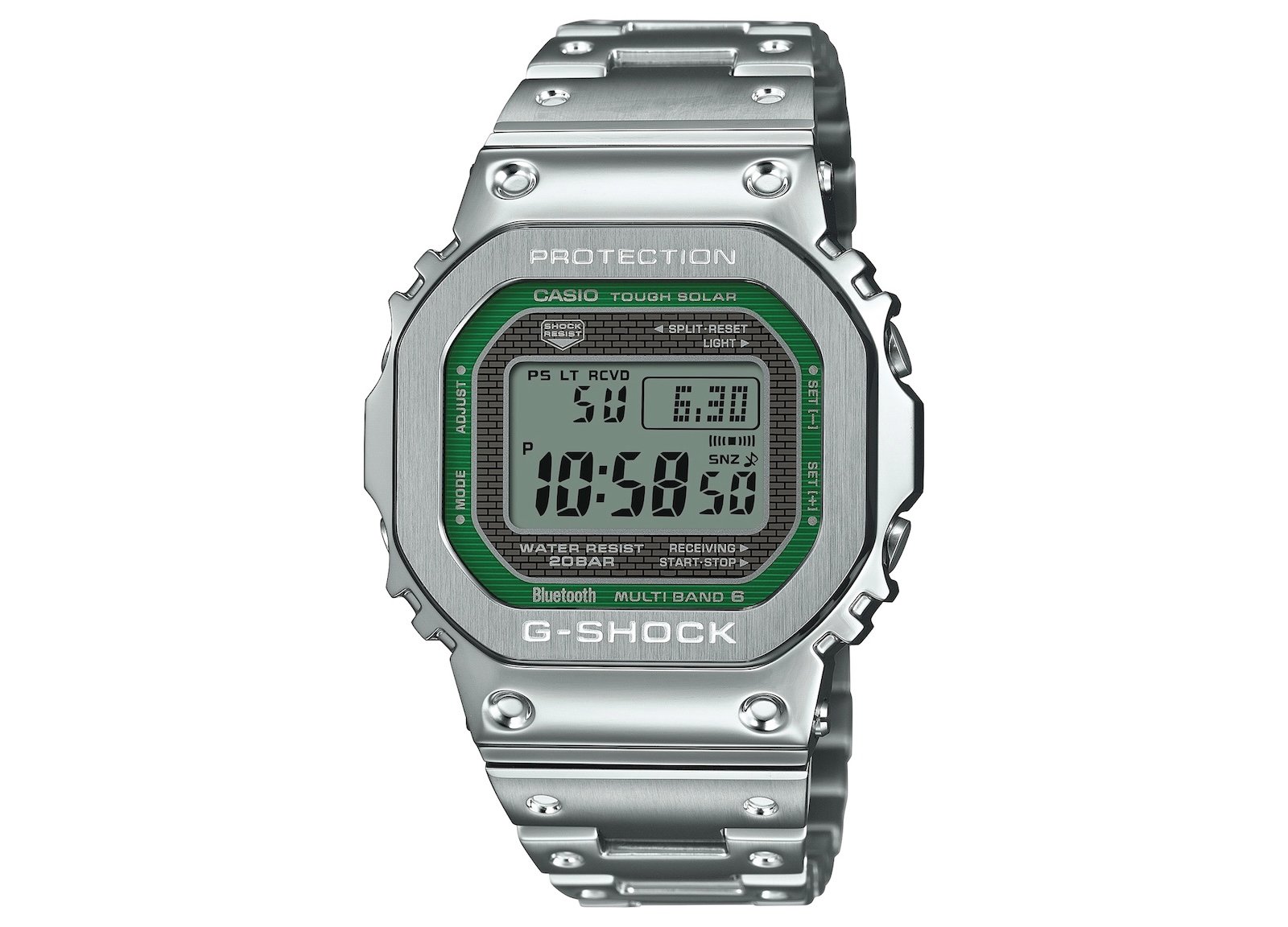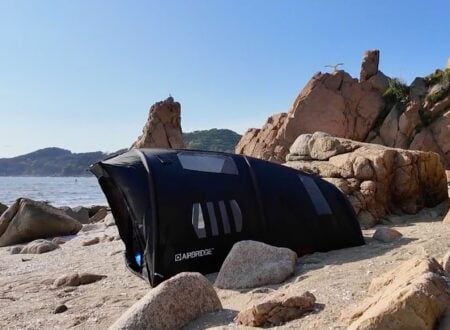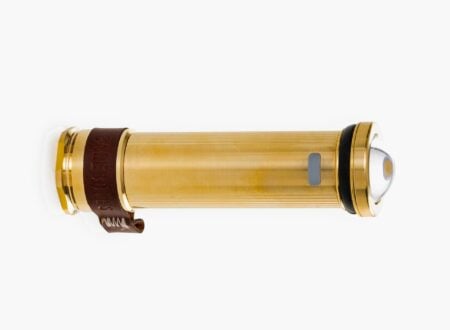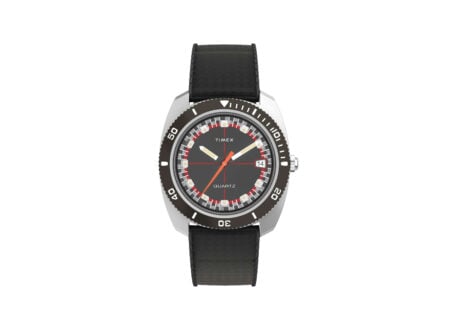This is the Casio G-Shock GMWB5000D-3, it’s a new stainless steel member of the 40+ year old G-Shock model family with built-in solar recharging, a depth rating of 200 meters, 39 time zones, and a slew of other functions.
The Casio G-Shock series of digital watches made their debut in 1983. They were designed from a blank slate to resist mechanical stress, shock, and vibration – the name stands for “Gravitational Shock.” A vast number of G-Shock models have been released over the intervening decades, and the version you see in this article is one of the rarer stainless steel-case variants.
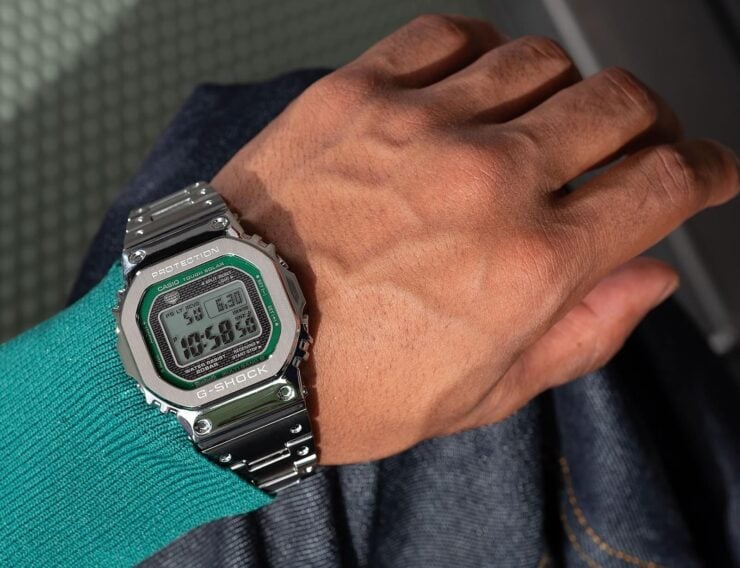

The Casio G-Shock: A History Speedrun
The story of how the G-Shock came to be is the stuff of legend in the horological community. As the story goes, Casio engineer Kikuo Ibe came up with the fundamental concept in 1981, when the watch given to him by his father came off and shattered on the ground after he bumped into a fellow pedestrian.
Ibe assembled a team of three Casio engineers that he called “Team Tough,” and they set to work designing a new kind of watch. The initial concept called for a watch that would meet the “Triple 10” test, that is it must have a battery life of 10 years, 10 bar of water resistance (100 meters), and be able to survive a fall of 10 meters with no damage.
After hundreds of prototypes, the first production-ready model was released in April of 1983. Named the G-Shock with the model designation DW-5000C, the watch had a stainless steel inner case with a chunky urethane rubber outer giving it the distinctive look that the model family would become famous for.
The quartz movement was cradled in a high-density 10 layer shock absorbing chamber, it had a water-resistance rating of 20 bar (200 meters), and a range of functions that were being made popular by the then-new generation of digital watches.
Although the design of the watch was revolutionary, the initial sales in Japan were slow, as most consumers preferred higher-end dress watches as a fashion statement. In order to boost sales in North America a television ad was made showing an ice hocker player using the G-Shock as a hockey puck.
It was broadly seen as false advertising, as up until this time watches had been far too delicate to withstand this kind of treatment. A TV news channel launched an investigative report, and after extensive testing showed that the G-Shock actually could take the hits, and would still work perfectly normally after being slapped by a hockey stick repeatedly.
The positive impact of this report was immense, the watch quickly became a best-seller, and a broad range of other G-Shock models would follow. Some versions are now flight-qualified for space travel by NASA, and the watches are used extensively by military personnel around the world.
The Stainless Steel Casio G-Shock Shown Here
The G-Shock you see in this post is the GMWB5000D-3 model It has a full stainless steel case, bezel, and caseback, giving it more of a high-end look compared to its black plastic contemporaries. This watch still has all the impact-resistance and toughness of the G-Shock line, but it will work well with a broad range of outfits, from outdoor wear to a three piece suit.
The watch has a solar face meaning it can run indefinitely if regularly exposed to light, and the built-in battery can also run for up to 22 months in total darkness in power saving mode. It’s water resistant to 200 meters and it has a solid screw-lock case back with a DLC coating.
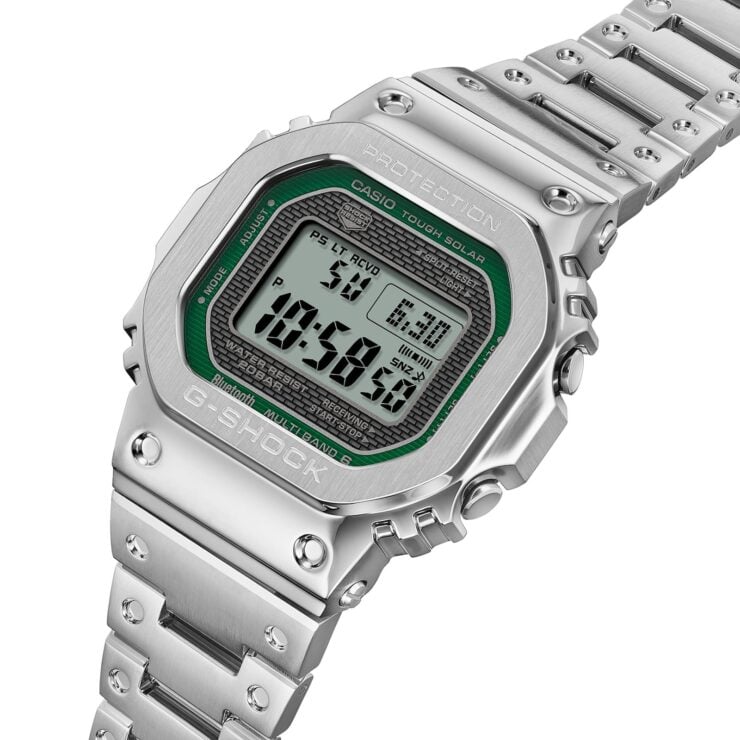

Interestingly, the watch has built-in Bluetooth and can be connected to your smartphone to ensure perfect accuracy, and allowing you to update various functions without needing to use the pushers.
The G-Shock GMWB5000D-3 is now retailing for $550 on Huckberry and comes with free US shipping, free returns, and a best price guarantee. If you’d like to read more about it or get your own you can visit the listing here.
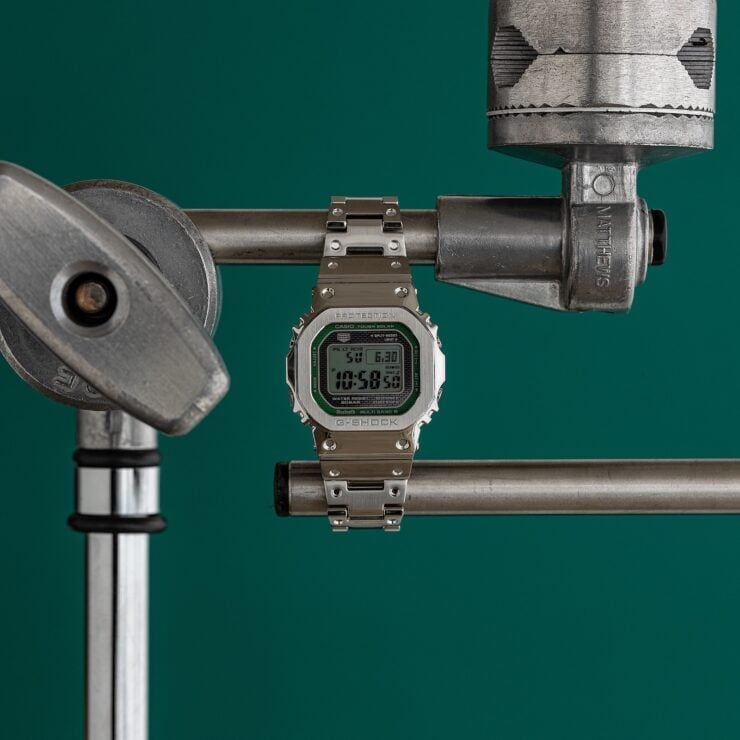
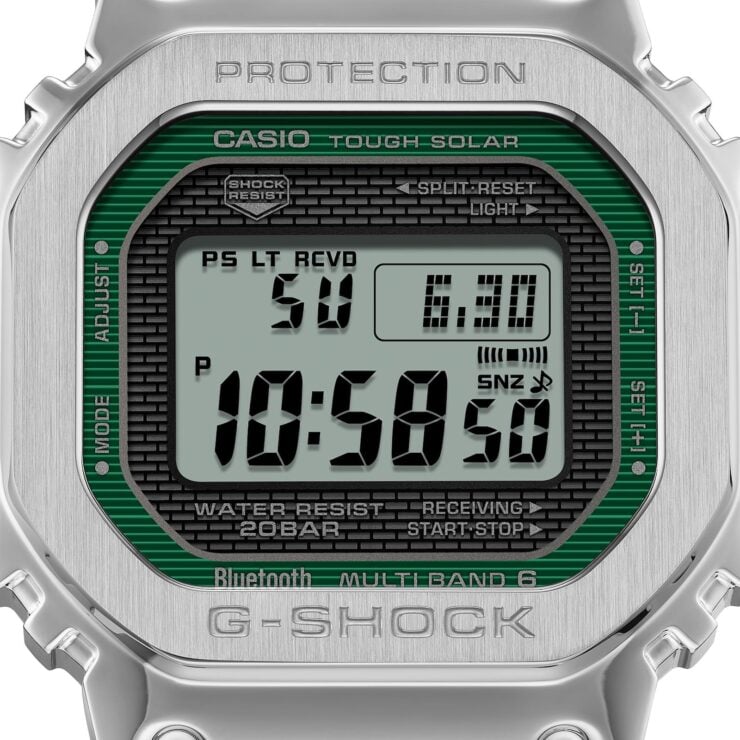
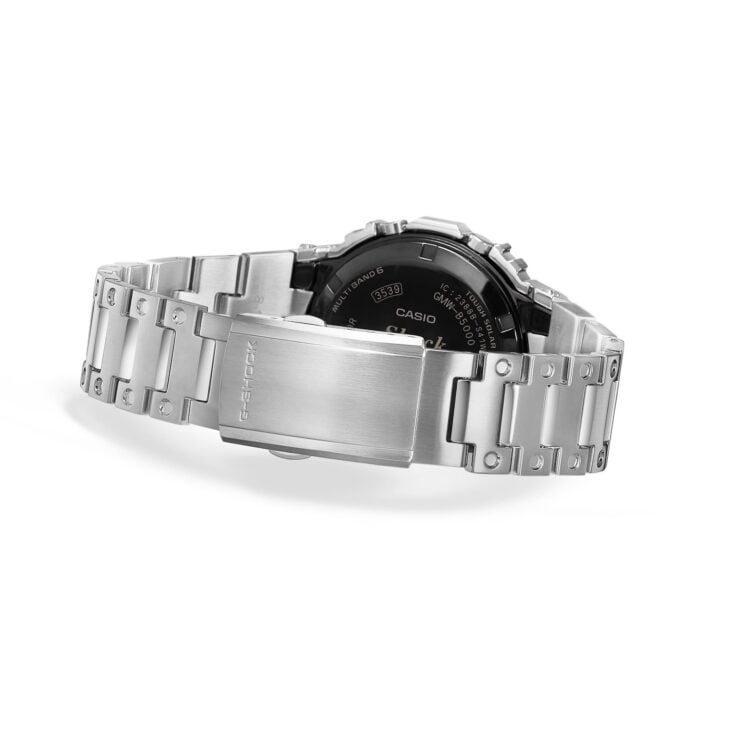
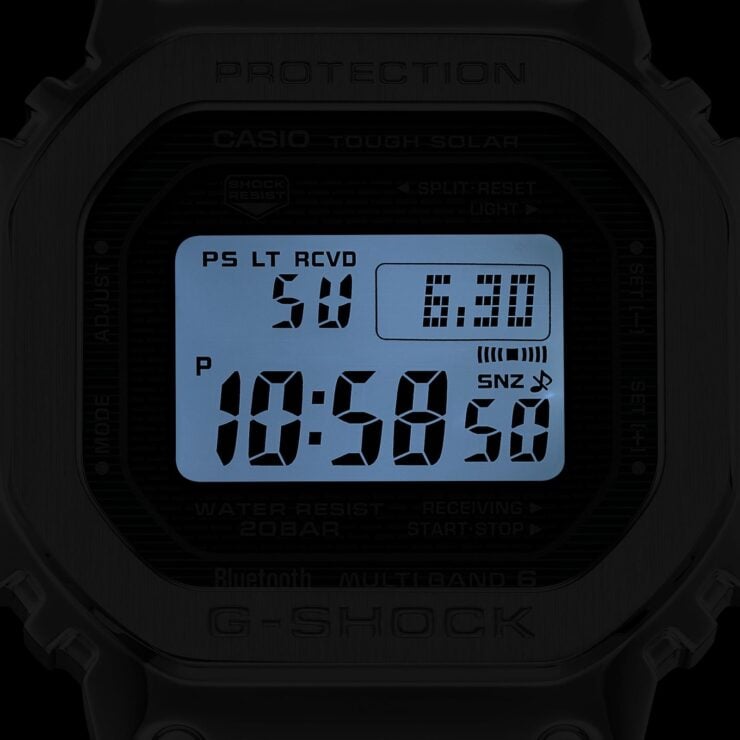

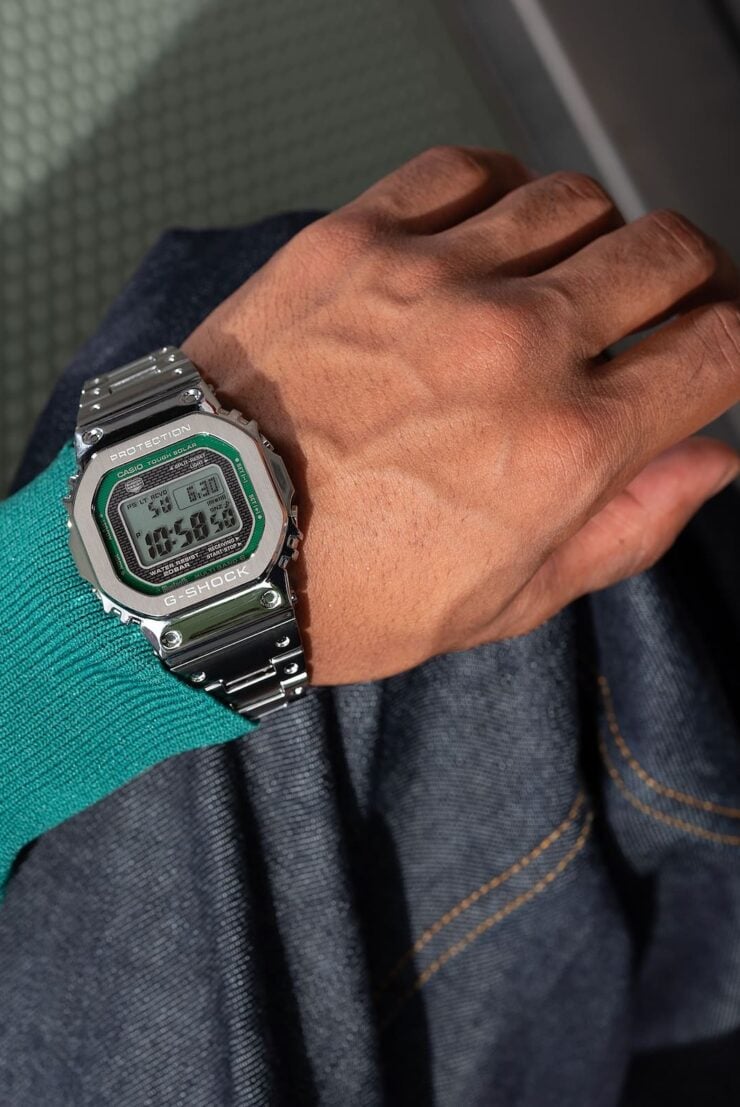
Images courtesy of Casio + Huckberry

